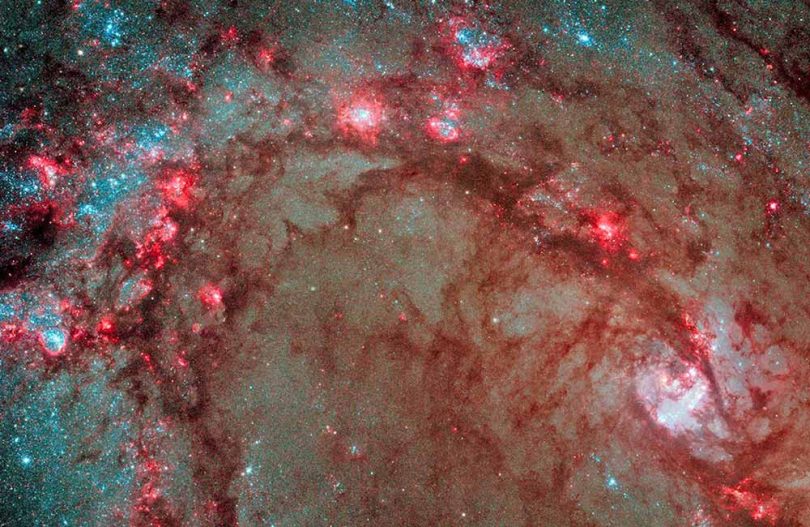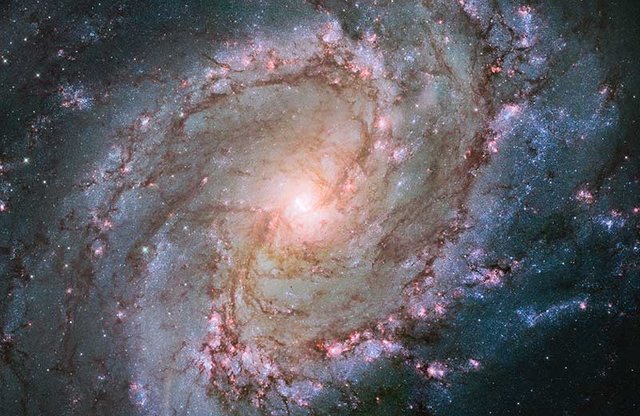
In the photo above you see a close look at one of the spiral arms of the M83 Galaxy discovered by Nicolas Louis de Lacaille in 1752 and featured on Charles Messier's famous Messier Catalog.
M83 is only 15 million light years away and we have a spiral structure like our Milky Way. The red fields you have seen are the nebulae in which intense new star formation is experienced. If we could go outside the Milky Way and look at our galaxy from a distance, we could see that the nebulae, in which millions of new stars had formed, were arranged along the spiral arms of our galaxy. But for now we do not have the opportunity to do this and we can only observe our galaxy from the inside. But like the M83, it is possible for us to learn about the nature of our own galaxy by observing the same galaxies in the Milkyway as you see it in this photo.

Scientifically, this galaxy, also referred to as NGC 5236, is another small group that is very close to our local galaxy group. It is somewhat smaller than the Milky Way, with a diameter of about 60 thousand light years, close to the Triangle Galaxy, which is actually the third largest of our local group. It is also necessary to note that due to structural similarity it is often confused with M101, which is called the "Pinwheel Galaxy". Messier 83 is wrongly called a pinwheel galaxy. Rather, shudder; Messier 83 is called the "Southern Windmill Galaxy".
Cool post you got here, buddy.
Downvoting a post can decrease pending rewards and make it less visible. Common reasons:
Submit
Thanks (=
Downvoting a post can decrease pending rewards and make it less visible. Common reasons:
Submit
Your Post Has Been Featured on @Resteemable!
Feature any Steemit post using resteemit.com!
How It Works:
1. Take Any Steemit URL
2. Erase
https://3. Type
reGet Featured Instantly – Featured Posts are voted every 2.4hrs
Join the Curation Team Here
Downvoting a post can decrease pending rewards and make it less visible. Common reasons:
Submit